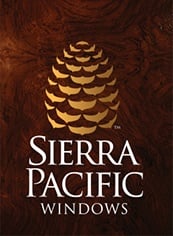
Why glass matters
For the sake of our discussion solar heat gain, defined as simply as possible, is heat that passes through a window to the interior of the building. This can have varying effects on comfort depending upon where you live relative to the sun’s position in the sky.

For those who live in the Southern United States having solar radiation pass through your windows and enter your building is likely going to cause occupant discomfort and excessive energy consumption in the way of increased cooling loads. In general, if you live in a climate that uses air conditioning you should be especially mindful of your glass selection relative to the Solar Heat Gain Coefficient (SHGC).
Triple silver surfaces of Low-E (low emissivity) coatings are a great tool in these climates. They reduce the solar gain of the glass and reflect most of the unwanted radiant energy away from the building. Among others, these include LoE 340 and LoE 366 from Cardinal Glass. Coupled with shading strategies, cooling loads can be dramatically reduced in warm climates by designing around these principles.
Conversely, for those in the northern portion of the country, having glass that allows for passive solar gain can be a great way to reduce heating loads. It’s not as simple as just picking the right glass however and good design is never by accident. The orientation of the building must be taken into account and the facades that face south and west offer the best opportunity for capturing heat gain. It’s important to model the sun's pathway since you want the sun’s rays to enter the building during the winter months when the sun is lowest on the horizon. During the summer months, the sun's angle is more acute and therefore shading strategies can be employed. Those include overhangs, shades, and our personal favorite, deciduous trees. Trees are fantastic for a few reasons. They hold leaves in the summertime blocking out most direct sunlight. Each mature tree also has the effect of twenty room-sized air conditioners, by cooling the air between the trees and the building, through evaporation. During wintertime, the leaves have fallen off so the sun’s rays can easily penetrate through the windows of the building.
facades that face south and west offer the best opportunity for capturing heat gain. It’s important to model the sun's pathway since you want the sun’s rays to enter the building during the winter months when the sun is lowest on the horizon. During the summer months, the sun's angle is more acute and therefore shading strategies can be employed. Those include overhangs, shades, and our personal favorite, deciduous trees. Trees are fantastic for a few reasons. They hold leaves in the summertime blocking out most direct sunlight. Each mature tree also has the effect of twenty room-sized air conditioners, by cooling the air between the trees and the building, through evaporation. During wintertime, the leaves have fallen off so the sun’s rays can easily penetrate through the windows of the building.
How to keep the temperature just right
Single coat silver Low-E sur faces are the class of coatings that work best to allow passive solar gain. Cardinal’s LoE 180 is a great product often used in these applications. This glass works especially well in triple glazed assemblies since it maintains not only a high SHGC but also great visible light transmittance.
faces are the class of coatings that work best to allow passive solar gain. Cardinal’s LoE 180 is a great product often used in these applications. This glass works especially well in triple glazed assemblies since it maintains not only a high SHGC but also great visible light transmittance.
Much of the country is somewhere in the middle of these two extremes. Just like Goldilocks and the Three Bears, one option might be too hot while another too cold, and somewhere in between is just right. The glass options that best reflect this approach are Cardinal’s LoE 270 or LoE 272, which are interchangeable. These offer a middle-of-the-road solution by blocking most heat gain yet still allowing for great clarity. This product represents most manufacturer’s “standard” Low-E offering and will typically keep the specifier out of trouble.
Do your windows check all the boxes?
 Regardless of where you live please make sure to check your local building codes. What is allowed in one jurisdiction may very well not be in another. It’s important to ensure that your windows and doors meet your local requirements before placing the order. These are not things that can easily be changed after the fact.
Regardless of where you live please make sure to check your local building codes. What is allowed in one jurisdiction may very well not be in another. It’s important to ensure that your windows and doors meet your local requirements before placing the order. These are not things that can easily be changed after the fact.
We invite you to reach out to your local Sierra Pacific Windows Architectural Consultant to learn more about how to incorporate these strategies into your next building! Find the nearest Architectural Consultant here.
Photo credits for blog: photo 1 LEVER ARCHITECTURE | Jeremy Bittermann & Joel B Sanders Agency



